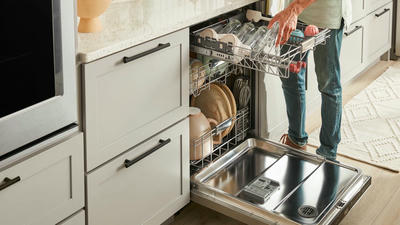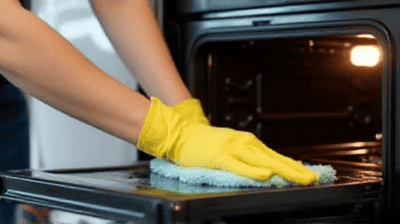How to Extend the Life of Your Washing Machine with Regular Care

Your washing machine is one of the most important appliances in your home, playing a critical role in keeping your clothes clean and fresh. However, many homeowners overlook the importance of regular maintenance and care, which can lead to premature wear and tear, costly repairs, or even the need for a full replacement.
Understanding the Importance of Washing Machine Care
Why Regular Maintenance Matters
Prolonged Lifespan: Just like any appliance, regular care can significantly extend the lifespan of your washing machine, allowing you to get the most out of your investment.
Enhanced Performance: Regular maintenance ensures that your washing machine operates efficiently, providing thorough cleaning while using less water and energy.
Preventing Breakdowns: Routine checks can help identify potential issues before they escalate into major problems, saving you time and money.
Improved Cleaning Results: A well-maintained washing machine can deliver better cleaning results, removing dirt and grime effectively from your clothes.
Energy Efficiency: Keeping your machine in good condition can lead to lower energy bills, as an efficiently running machine uses less electricity and water.
With these reasons in mind, let’s explore practical steps you can take to maintain your washing machine effectively.
Step 1: Regular Cleaning of the Washing Machine

Importance of Cleaning
Over time, dirt, detergent residue, and fabric softener can build up in your washing machine, affecting its performance and leading to unpleasant odors. Regular cleaning is essential to keep your washing machine functioning optimally and to prevent the growth of mold and mildew.
How to Clean Your Washing Machine
Front-Loading Machines:
Gasket Cleaning: Check the rubber gasket around the door for debris and mildew. Wipe it down with a damp cloth and a mild detergent or a mixture of equal parts water and vinegar.
Drum Cleaning: Run an empty cycle on the hottest setting. Add two cups of white vinegar or a specialized washing machine cleaner to the drum. This helps remove odors and mildew.
Detergent Dispenser: Remove the detergent dispenser and clean it thoroughly. Soak it in warm water to dissolve any residue, then scrub it with an old toothbrush.
Filter Check: Check the filter for lint and debris. Clean it according to your owner’s manual.
Top-Loading Machines:
Agitator Cleaning: Check the inside of the drum and agitator for any residues. Use a damp cloth to wipe it down.
Drum Cleaning: Fill the machine with hot water and add a cup of baking soda or vinegar. Allow it to agitate for a few minutes, then let it sit for an hour before completing the cycle.
Detergent Dispenser: If your top-loading machine has a dispenser, clean it regularly to avoid build-up.
Filter Maintenance: Remove and clean the filter if your model has one.
Frequency of Cleaning
Aim to clean your washing machine at least once a month to prevent build-up and maintain hygiene.
Step 2: Check and Maintain Hoses
Why Hose Maintenance Matters
The hoses connected to your washing machine play a crucial role in its operation. Over time, these hoses can become worn, cracked, or clogged, leading to leaks or even water damage.
How to Inspect and Maintain Hoses
Check for Leaks: Regularly inspect the hoses for any signs of leaks or bulges. If you notice any damage, replace the hoses immediately.
Positioning: Ensure that the hoses are not kinked or pinched, as this can restrict water flow or cause wear over time.
Use the Right Hoses: Consider using reinforced hoses, which are less prone to bursting.
Replace Old Hoses: In general, you should replace hoses every 5-7 years, even if they appear to be in good condition, as they can deteriorate over time.
Frequency of Inspection
Perform a visual inspection of the hoses every few months and replace them as needed.
Step 3: Use the Right Detergents

Importance of Choosing the Right Detergent
Using the proper detergent is vital for ensuring the effective cleaning of your clothes while also protecting your washing machine from damage.
Choosing the Correct Detergent
High-Efficiency Detergents: If you have a high-efficiency (HE) washing machine, always use HE detergent. This type of detergent is formulated to produce fewer suds.
Avoid Overuse: Using too much detergent can lead to excessive suds, which can cause your machine to work harder and potentially malfunction. Follow the manufacturer’s recommendations for dosage based on load size.
Consider Liquid vs. Powder: Liquid detergents generally dissolve better in cold water, while powdered detergents can be effective in hot water. Think about your washing habits when choosing between the two.
Allergy Considerations: If anyone in your household has allergies or sensitive skin, consider using hypoallergenic detergents, which can be gentler on clothes and skin.
How to Load Detergent
Use the Correct Compartment: Make sure you are putting detergent in the designated compartment to avoid build-up that can affect performance.
Measure Correctly: Use the measurement lines on the detergent cap or your washing machine's recommendations to avoid overloading.
Step 4: Do Not Overload the Washer
The Impact of Overloading
While it may be tempting to fit more clothes into a single load, overloading your washing machine can lead to various issues:
Poor Cleaning Results: Clothes need room to move around for proper washing. An overloaded machine could leave clothes dirty.
Increased Wear and Tear: Overloading can strain the machine, leading to mechanical issues over time.
Imbalance Issues: An overloaded washer can become unbalanced during the spin cycle, which may lead to excessive noise and vibrations and potentially damage the machine.
How to Load the Washer Properly
Follow Load Recommendations: Refer to your washing machine’s recommendations regarding load capacity. This information can typically be found in the owner’s manual.
Distribute Evenly: Place clothes in the drum evenly to ensure balance. Avoid piling clothes on one side of the drum.
Separate Heavy and Light Fabrics: Wash heavy items like towels and blankets separately from lighter items to avoid overloading.
Size Considerations
Regularly use full loads to save water and energy, but make sure not to exceed capacity limits for optimal performance.
Step 5: Care for the Washing Machine Exterior

Importance of Exterior Maintenance
Keeping the exterior of your washing machine clean helps to maintain its appearance and can prevent corrosion and damage over time.
How to Clean the Exterior
Use Gentle Cleaners: Wipe down the exterior surfaces with a soft cloth and a mix of warm water and mild detergent. Avoid abrasive cleaners that can scratch the finish.
Pay Attention to Control Panels: Use a soft cloth to clean control panels gently. Ensure that no moisture enters any electronic components.
Keep the Area Around the Washer Clean: Maintaining a clean space around the washer helps prevent dust and lint from entering the machine.
Frequency of Exterior Cleaning
Wipe down the exterior of your washing machine at least once a week, or as needed, to keep it looking its best.
Step 6: Regularly Check the Level of the Washer
Why Leveling Matters
An uneven washing machine can lead to excessive vibrations and can potentially damage both the machine and the floor beneath it. Ensuring that your washer is level helps maintain stability during operation.
How to Level Your Washer
Check the Level: Use a level tool to check if your washing machine stands correctly on the floor. Place it on top of the washer from the side and front to check for levelness.
Adjust the Feet: Most washing machines have adjustable feet. If the washer is not level, adjust the feet accordingly by twisting them until the washer sits evenly.
Recheck After Adjustments: After making adjustments, recheck with the level tool to ensure the machine is properly leveled.
Frequency of Level Checks
Check the level whenever you notice excessive vibrations or after moving the washing machine.
Step 7: Address Issues Promptly
Importance of Timely Repairs
Ignoring small issues can lead to more significant problems down the line. Addressing issues promptly helps ensure your washing machine continues to function correctly.
Common Issues to Watch For
Unusual Noises: Listen for banging, grinding, or squeaking noises during operation, which may indicate a mechanical issue.
Leaks: Check for any water pooling around the washing machine. This can indicate a clogged drain or faulty hoses.
Failure to Start: If the machine refuses to start, check the power supply and circuit breaker before seeking professional assistance.
Inadequate Cleaning: If your clothes are not coming out clean, it could signal issues with detergent use or the need for a thorough machine cleaning.
When to Call a Professional
If troubleshooting does not resolve the issue, consider contacting a licensed technician for a thorough assessment and repair.
Step 8: Use the Right Wash Cycles
Importance of Selecting the Right Cycle
Different fabrics require different wash cycles to prevent damage and ensure effective cleaning. Using the correct settings not only preserves the integrity of your clothes but also enhances washing efficiency.
How to Choose the Right Cycle
Understanding Cycle Options: Familiarize yourself with the various cycle options on your washing machine, such as regular, delicate, heavy-duty, and quick wash. Each cycle is designed for specific fabric types and soil levels.
Refer to Care Labels: Always check the care labels on your clothing to determine the best wash cycle, water temperature, and drying recommendations.
Adjust for Load Size: Depending on the size of the load, you may need to select a different cycle. Smaller loads generally require shorter cycles.
Benefits of Proper Cycle Use
Using the right wash cycle helps ensure that each load comes out clean and undamaged while optimizing the machine's performance.
Step 9: Protect the Washing Machine from Power Surges
Understanding Power Surges
Power surges can occur during storms or fluctuations in energy supply and can damage electronic components in your washing machine.
How to Protect Your Washing Machine
Use a Surge Protector: Invest in a quality surge protector specifically designed for appliances. This device can provide an extra layer of protection against voltage spikes.
Unplug During Storms: If you anticipate a storm, consider unplugging your washing machine to prevent potential damage.
Check Electrical Supply: Ensure your home’s electrical system is in good condition. If you experience frequent surges, consult a licensed electrician for assessments and solutions.
Frequency of Surge Protection Checks
Regularly check your electrical systems, especially in areas prone to storms or power fluctuations.
Step 10: Embrace a Regular Maintenance Schedule
Importance of Scheduling
Regular maintenance can seem overwhelming, but creating a schedule simplifies the process and ensures that no necessary task is overlooked.
Creating Your Maintenance Schedule
Daily Tasks: Set aside a few minutes each day to wipe down the exterior and check for unusual signs, such as leaks or odd noises.
Weekly Tasks: Incorporate weekly cleaning of the detergent dispenser and periodic checks of hoses.
Monthly Tasks: Schedule deep cleaning of the washing machine, inspection of hoses, and checking levels.
Yearly Tasks: Plan for a thorough professional inspection of your washing machine at least once a year.
Benefits of a Maintenance Schedule
Having a regular maintenance schedule not only helps extend the life of your washing machine but also instills confidence in its performance, ensuring that it continues to operate smoothly and efficiently.
Conclusion
Extending the life of your washing machine through regular care is not only beneficial for the appliance itself but also for your household. By following the comprehensive maintenance steps outlined in this guide, you can enhance performance, improve cleaning results, and prevent costly repairs.
Investing time in regular cleaning, careful handling, and proactive checks allows you to enjoy the convenience of a reliable washing machine for years to come. Remember, a well-maintained washing machine will not only serve you better but will also save you money in the long run.
By incorporating these practices into your routine, you will contribute to a healthier and more efficient home, ensuring that your washing machine remains a valuable asset in your daily life.


